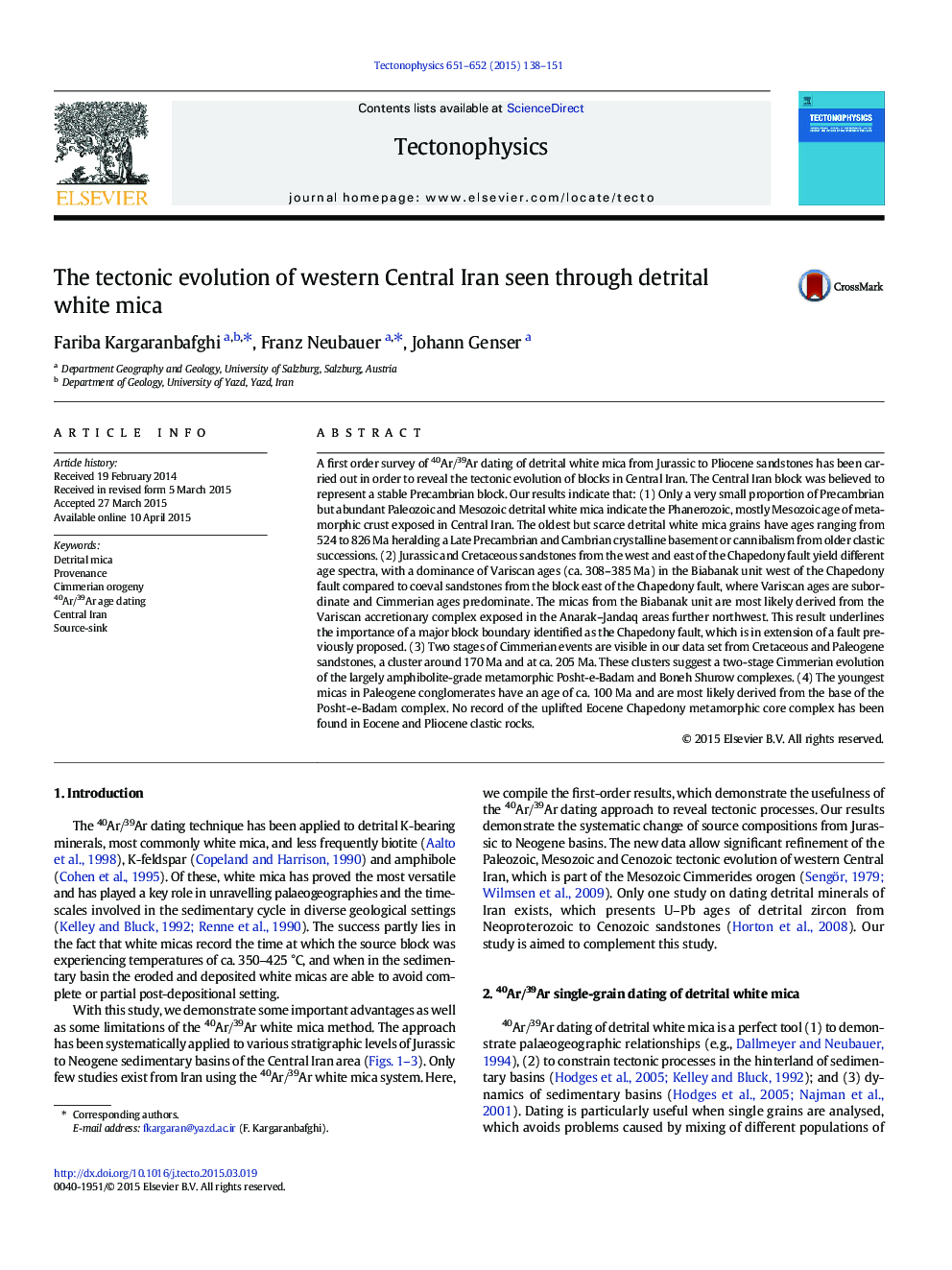| کد مقاله | کد نشریه | سال انتشار | مقاله انگلیسی | نسخه تمام متن |
|---|---|---|---|---|
| 4691630 | 1636743 | 2015 | 14 صفحه PDF | دانلود رایگان |
• Detrital white mica from Jurassic to Pliocene rocks of Central Iran was studied.
• The oldest detrital white mica grains have ages ranging from 524 to 826 Ma.
• The importance of a major block boundary was identified as the Chapedony fault.
• Two steps of the Cimmerian orogeny were identified, at ca. 205 and 170 Ma.
• No record of the uplifted Eocene CMCC has been found in clastic rocks.
A first order survey of 40Ar/39Ar dating of detrital white mica from Jurassic to Pliocene sandstones has been carried out in order to reveal the tectonic evolution of blocks in Central Iran. The Central Iran block was believed to represent a stable Precambrian block. Our results indicate that: (1) Only a very small proportion of Precambrian but abundant Paleozoic and Mesozoic detrital white mica indicate the Phanerozoic, mostly Mesozoic age of metamorphic crust exposed in Central Iran. The oldest but scarce detrital white mica grains have ages ranging from 524 to 826 Ma heralding a Late Precambrian and Cambrian crystalline basement or cannibalism from older clastic successions. (2) Jurassic and Cretaceous sandstones from the west and east of the Chapedony fault yield different age spectra, with a dominance of Variscan ages (ca. 308–385 Ma) in the Biabanak unit west of the Chapedony fault compared to coeval sandstones from the block east of the Chapedony fault, where Variscan ages are subordinate and Cimmerian ages predominate. The micas from the Biabanak unit are most likely derived from the Variscan accretionary complex exposed in the Anarak–Jandaq areas further northwest. This result underlines the importance of a major block boundary identified as the Chapedony fault, which is in extension of a fault previously proposed. (3) Two stages of Cimmerian events are visible in our data set from Cretaceous and Paleogene sandstones, a cluster around 170 Ma and at ca. 205 Ma. These clusters suggest a two-stage Cimmerian evolution of the largely amphibolite-grade metamorphic Posht-e-Badam and Boneh Shurow complexes. (4) The youngest micas in Paleogene conglomerates have an age of ca. 100 Ma and are most likely derived from the base of the Posht-e-Badam complex. No record of the uplifted Eocene Chapedony metamorphic core complex has been found in Eocene and Pliocene clastic rocks.
Journal: Tectonophysics - Volumes 651–652, 31 May 2015, Pages 138–151
